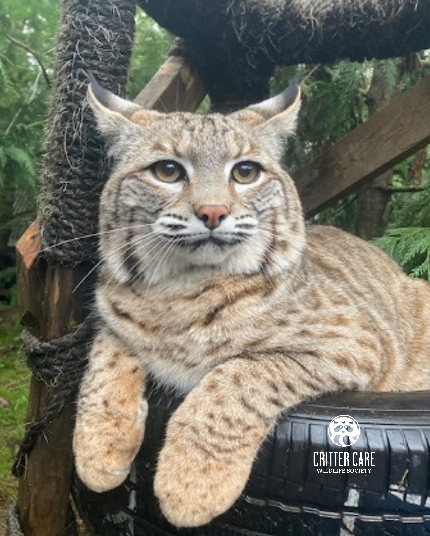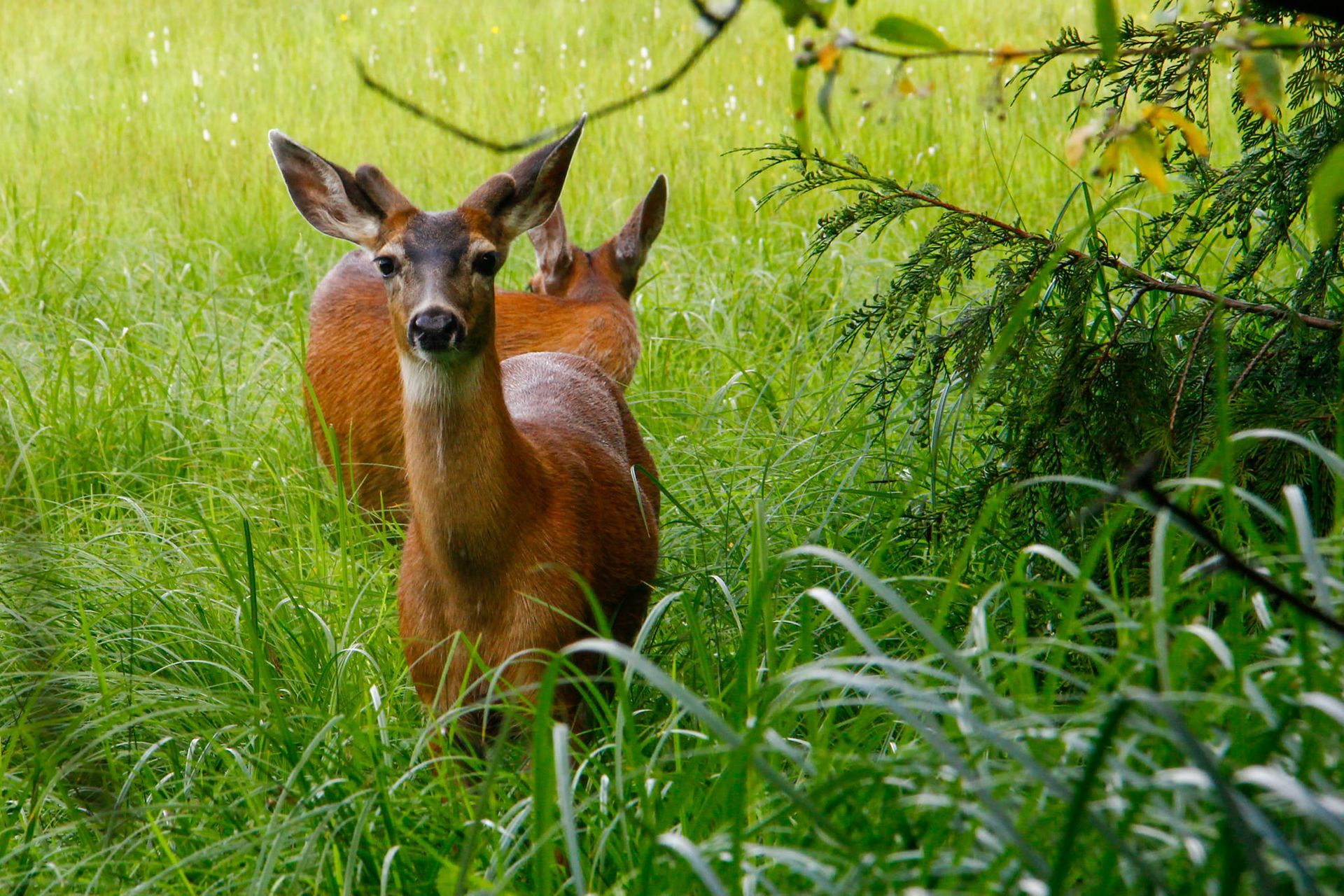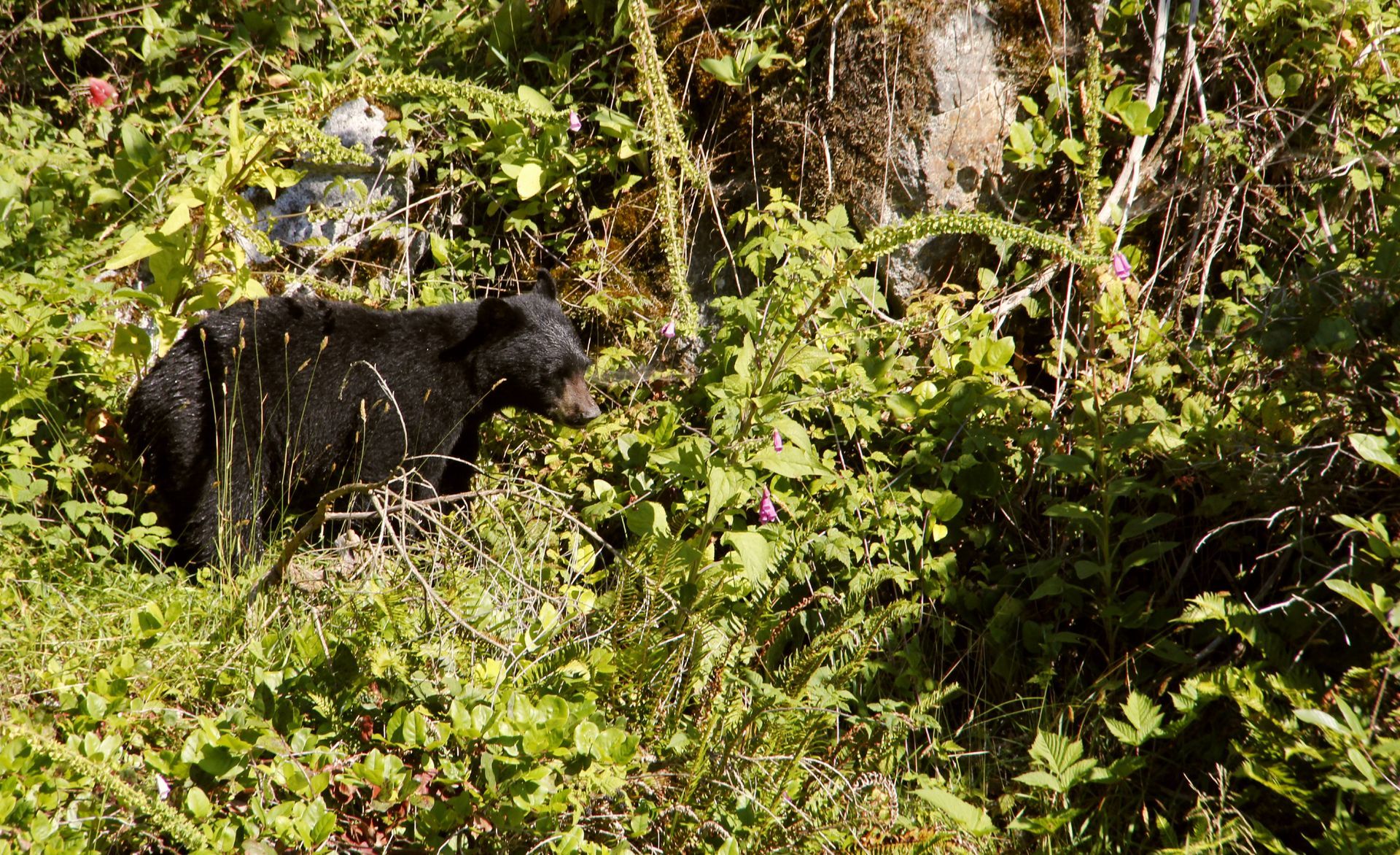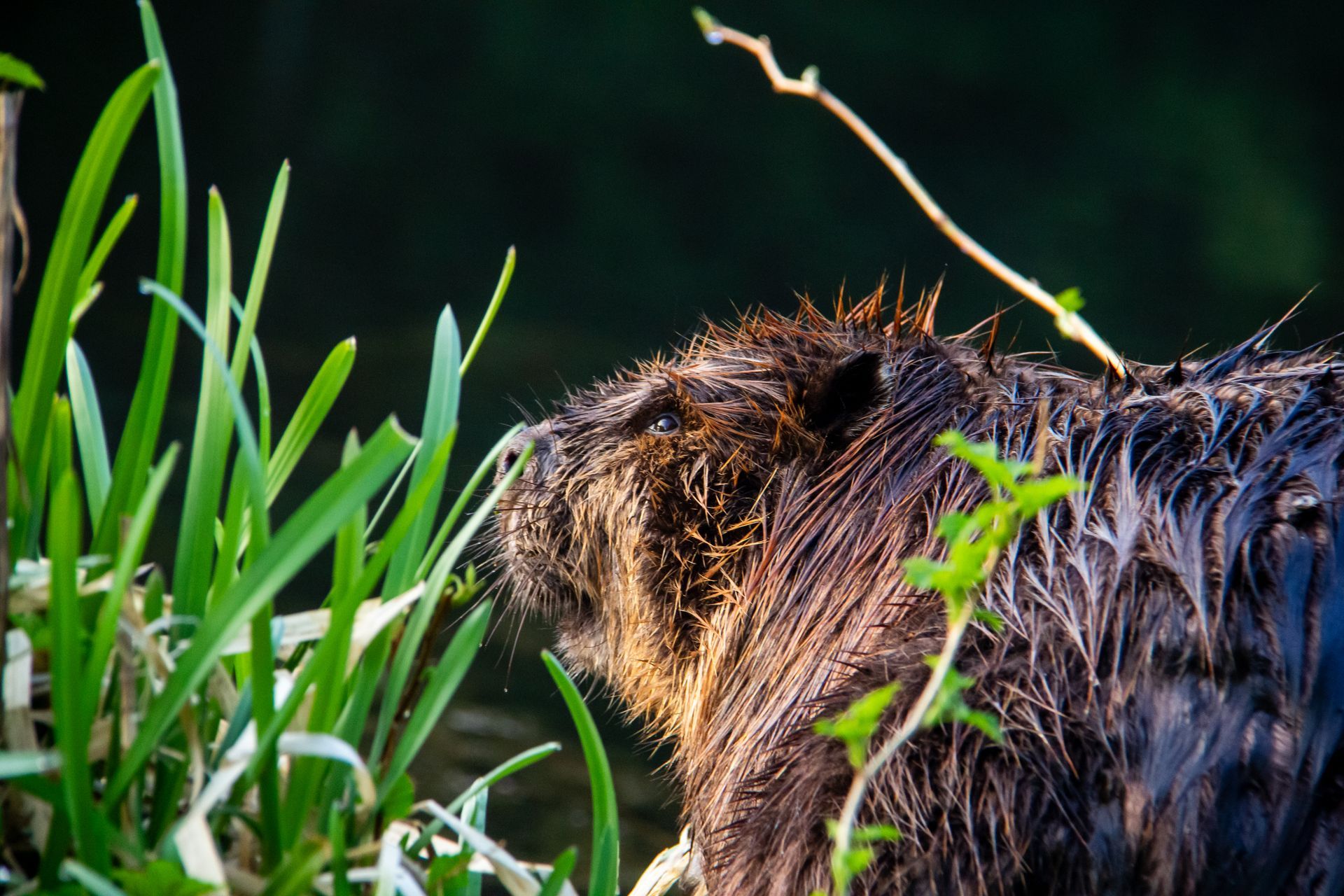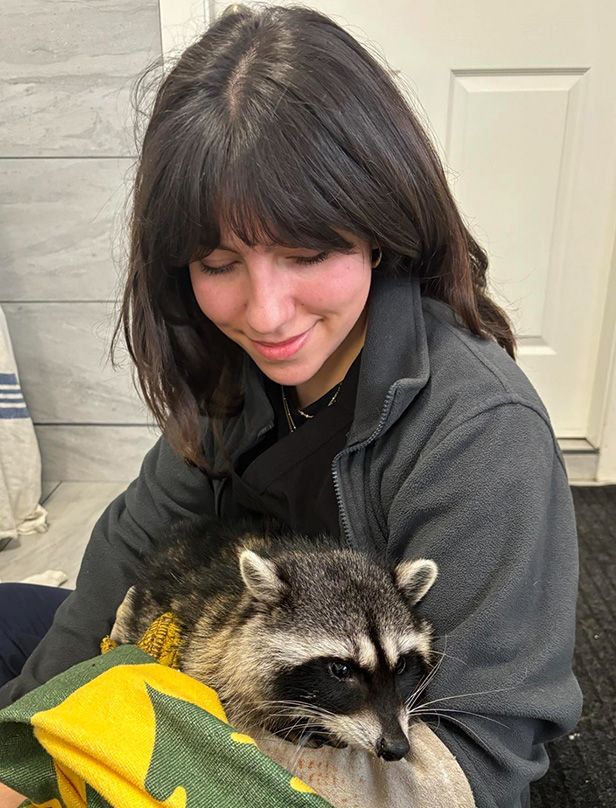What is here today can be gone tomorrow. Every life is a miracle, every life deserves a second chance.
- Gail Martin -
Discovering the Charm of North American River Otters: Nature's Playful Swimmers
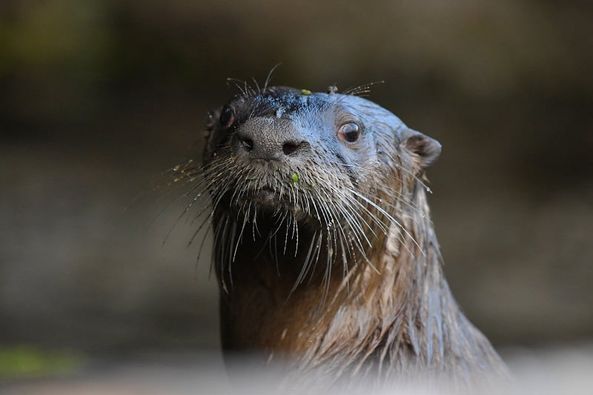
Introducing the playful River Otter
The North American river otter (Lontra canadensis), also known as, the Northern River Otter or, more commonly, simply, River Otter, is found only in North America, inhabiting the waterways and coasts. A typical adult otter will weigh 5 to 14 kg (11 – 31 lb), and range from 66 to 107 cm
(26 – 42 in) in length. They have thick, water-repellent fur that provides excellent protection and insulation from the cold. River otters are semiaquatic mammals and are members of the Lutrinae subfamily, which is a part of the weasel family.
Being great swimmers, the otters keep burrows close to and around; coastal shorelines, tidal flats, estuaries, lake shores, and rivers. Their dens will usually have more than one opening, letting them escape unseen predators.
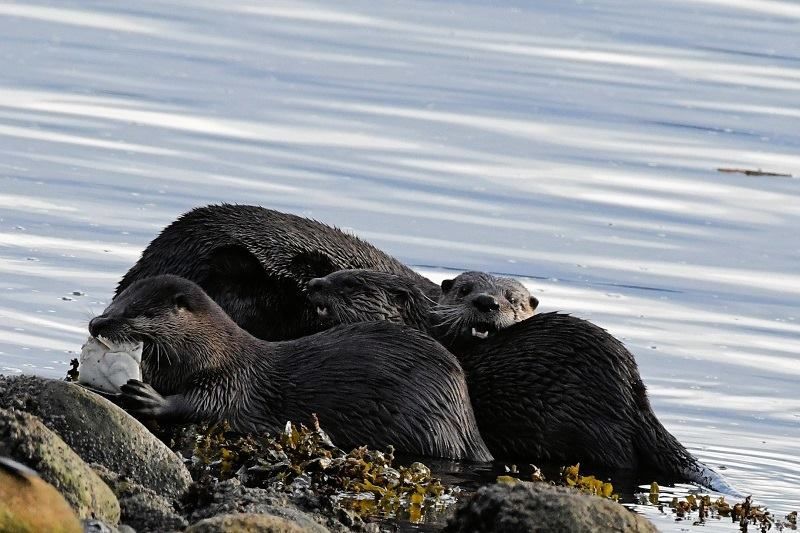
Diet and Habitat
River otters have a voracious appetite, and will hunt anything from; fish, crabs and other crustaceans, to small reptiles, amphibians, and birds, for example, ducks, during moult. They will also prey upon aquatic insects, otter will also eat fruits and aquatic plants. They are, however, not scavengers, and will avoid eating carrion (dead animals).
The territory of a North American River Otter, can range from the typical 5 to 24 square km, to 78 square km, (3–15 to 30 square miles). Otters use sent-marking to define their territory and are not aggressively territorial. River otters are well renowned for their love of play, which builds strong social bonds. They will often be found playing with one another, honing skills used for hunting and evading other predators. They also love playing in the mud and snow so they can slip and slide, into the water.
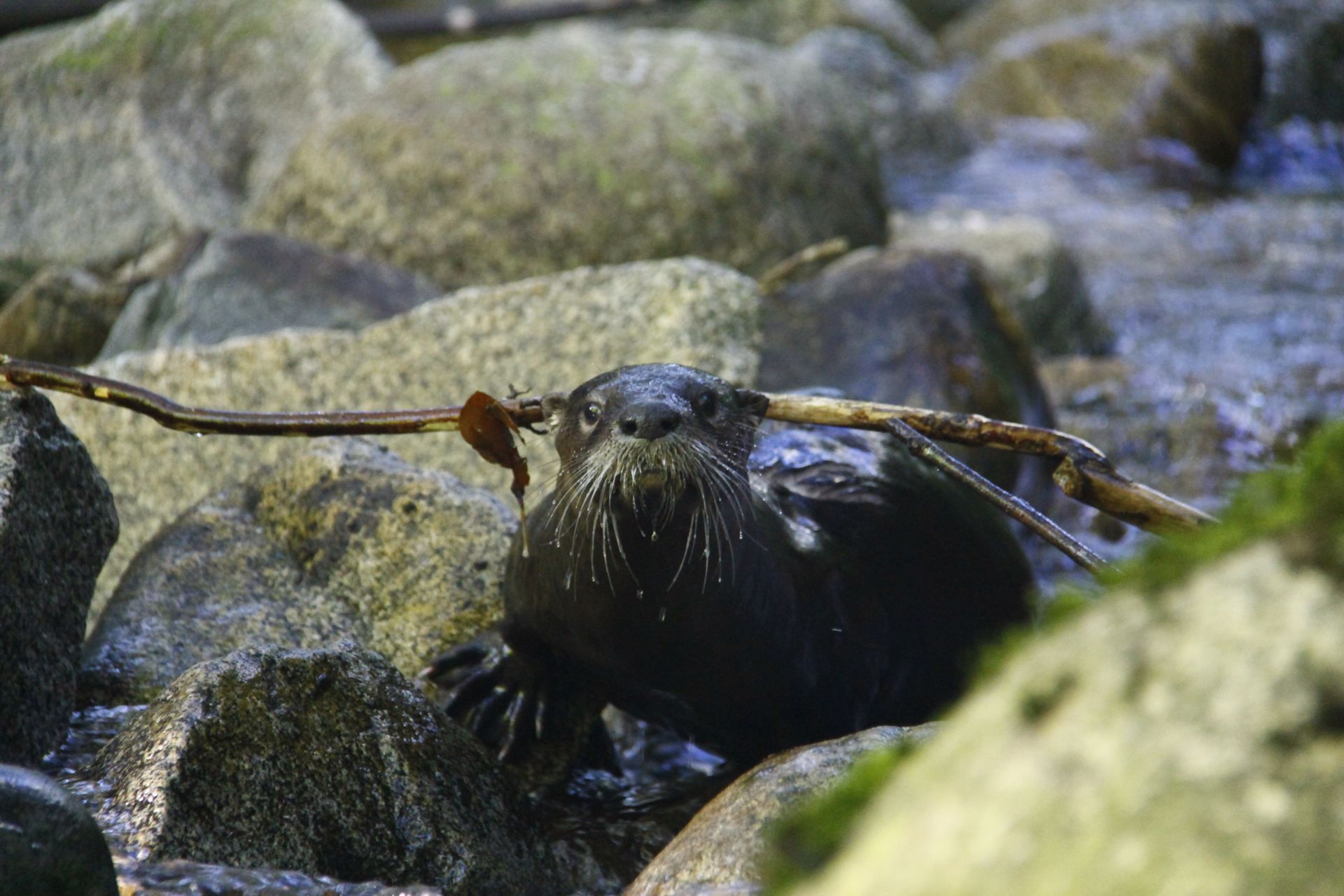
Description
In the early spring, the females will begin denning and will then go on to give birth to litters
of 1 to 5 kits, (sometimes called, pups) weighing an average of 142 Grams (5 Ounces). After their fur grows in, which takes about two months, the mothers will take the pups down to the water, where they will build upon the skills needed to swim and hunt. While the young otter is typically able to strike out on its own after eight weeks or so, they will more often stay with their parents for up to a year, leaving before the parents have another litter.
While river otters are most active at dawn or dusk, they can be seen at anytime of day.
When trying to spot an otter in the water, look for ripples, bubbles, and a head, on the surface of the water.
Unlike sea otters, river otters do not swim on their backs, and will swim with just their heads showing, they will dive, roll, and stay underwater for durations of 15 to 20 seconds, coming up to the surface to have a look ahead. They tend to be elusive and will appear to disappear into the bush, rocks, or water.
On land, despite their hunched appearance, they are fast and agile runners and can even climb trees!
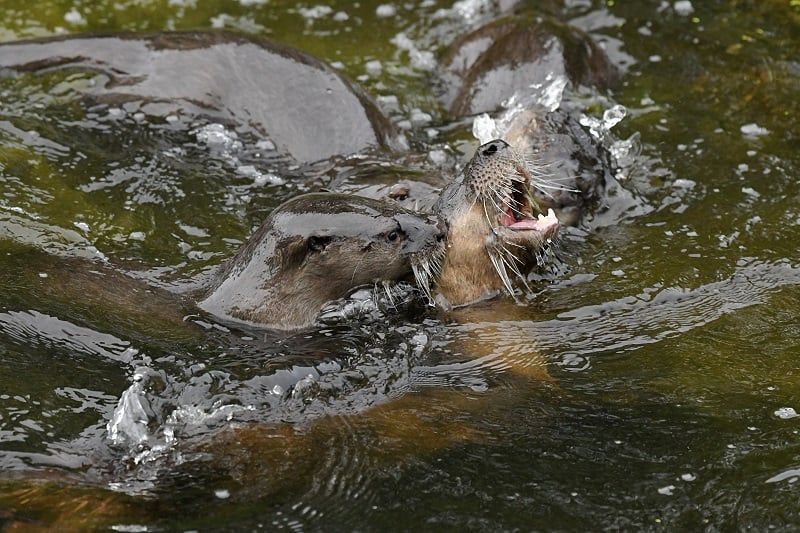
Some fun facts:
- Otters do not dig their own dens, they will find and use the burrows of other animals.
- Adult river otters can eat up to 1 to 1.5 kilos (2–3 lb) of fish per day.
- Their tails can be 30 to 50 cm (12 to 20 in) in length.
- Their long, thick, and sensitive whiskers help them find and hunt prey.
- The males are typically larger than the females.
- In the wild, otters will live from 8 to 13 years and can live from 21 to 25 years in captivity.
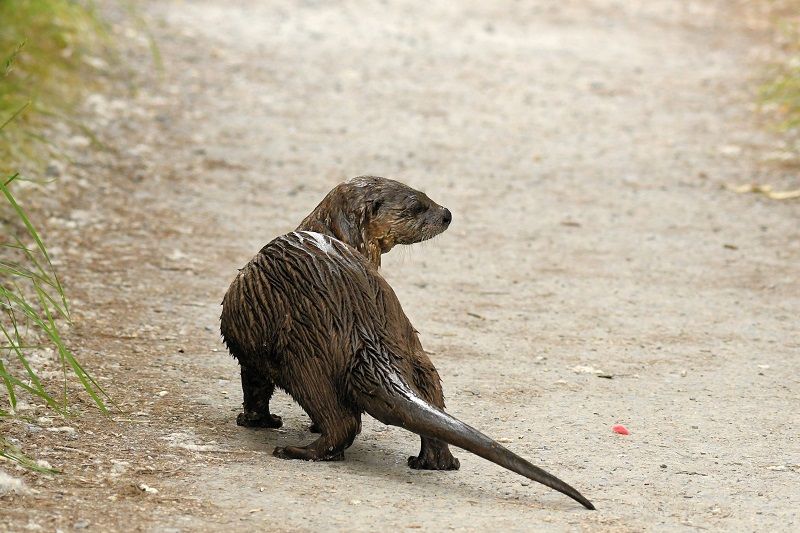
Some more facts
- They are near sighted and have an inner eyelid that is transparent, which is used when swimming underwater.
- They are capable of staying underwater for up to 8 minutes.
- Otters will often close their nostrils during long dives.
- They use touch and a variety of body language, together with; growls, screams, whistles, and yelps, to communicate with one another.
- Bears, bobcats, birds-of-prey, and other large predators, may sometimes prey on the otters.
- River otters are sensitive to pollution, and will leave polluted environments.
- They dive to depths of 18 m (60 ft).
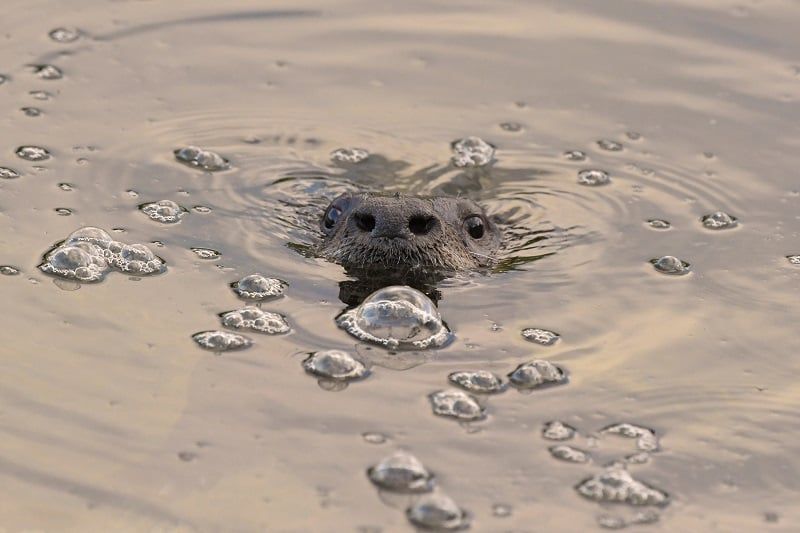
Perhaps, one day, you will have the good fortune, to observe these playful critters in the wild!
Critter Care Wildlife Society News



